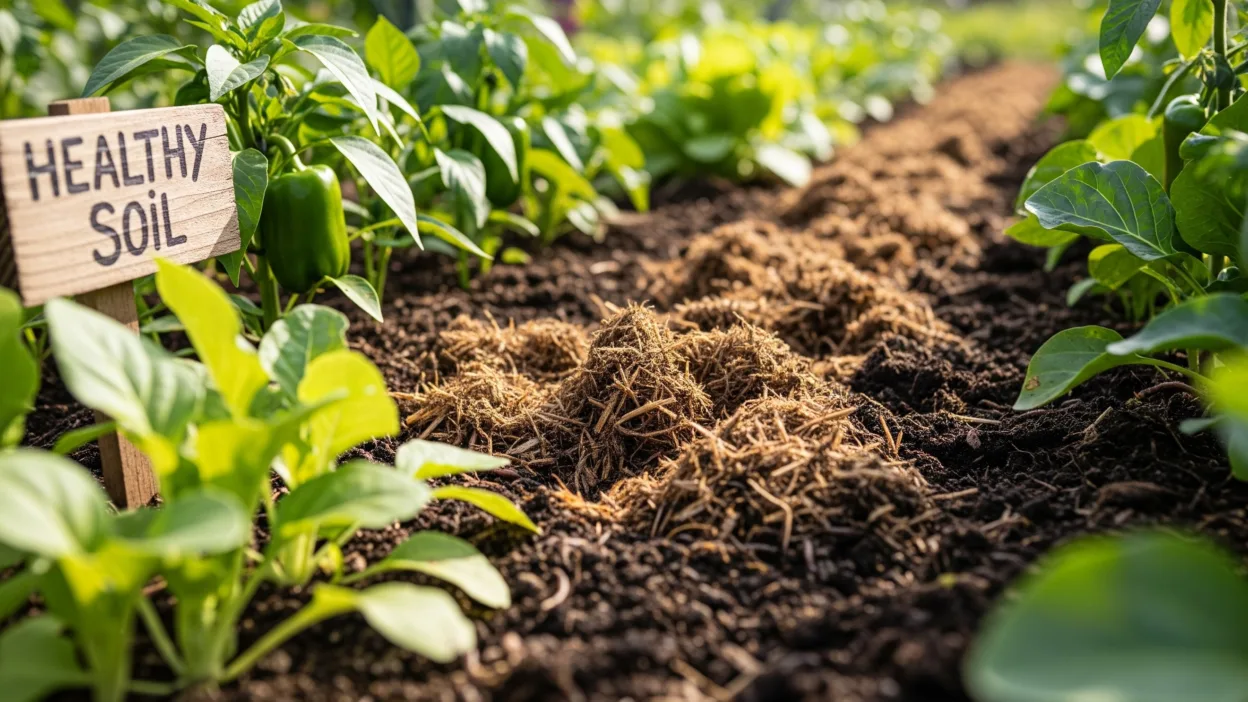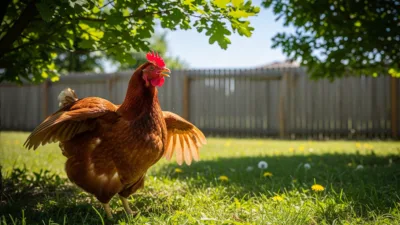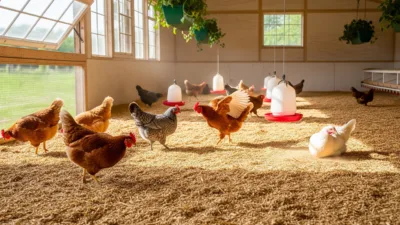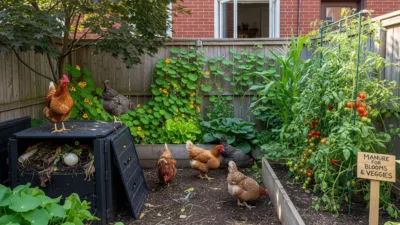Backyard chicken keeping and home gardening go hand in hand. While hens provide fresh eggs, their coop waste can also fuel your garden. One of the most overlooked resources in urban homesteading is chicken bedding. When properly composted, chicken bedding becomes a nutrient-rich fertilizer that improves soil structure, boosts vegetable yields, and reduces your dependence on store-bought fertilizers.
This guide will walk you through using chicken bedding as garden fertilizer, explain how it benefits your soil, and share step-by-step composting methods that are safe and effective for backyard growers in the United States.
What is Chicken Bedding Fertilizer?
Chicken bedding refers to the material used to line coops and absorb droppings, such as wood shavings, straw, or hemp. Over time, this bedding becomes mixed with manure, feathers, and food scraps. When composted, it turns into a powerful organic fertilizer packed with nitrogen, phosphorus, and potassium, the three essential nutrients plants need to thrive.
- Nitrogen promotes leafy green growth.
- Phosphorus supports root development and flowering.
- Potassium improves overall plant health and disease resistance.
Fresh chicken manure is too strong to apply directly to plants, but composted chicken bedding provides a slow-release fertilizer that enriches your garden naturally.
Benefits of Using Chicken Bedding in the Garden
1. Improves Soil Fertility
Chicken bedding adds valuable organic matter to the soil. This improves nutrient levels and makes soil more fertile for vegetables, herbs, and fruit.
2. Enhances Soil Structure
Composted bedding increases aeration, reduces compaction, and improves water retention. Plants grow better in fluffy, well-drained soil.
3. Reduces Waste
Instead of sending coop waste to the landfill, you recycle it back into your homestead. This closes the loop between your chickens and your garden.
4. Cuts Fertilizer Costs
Organic fertilizers can be expensive. By composting chicken bedding, you create a steady supply of free, high-quality fertilizer.
5. Sustainable Gardening
Using chicken bedding is eco-friendly, reducing your carbon footprint while promoting regenerative gardening practices.
Best Types of Chicken Bedding for Fertilizer
Not all bedding materials compost the same way. Choosing the right one can make the process easier and more effective.
- Wood Shavings (Pine or Aspen): Absorbent and compost well, but avoid cedar as it contains harmful oils.
- Straw or Hay: Break down quickly, add bulk to compost, and provide carbon.
- Hemp Bedding: Lightweight, absorbent, and eco-friendly.
- Leaves and Yard Waste: Can be mixed with coop waste to balance compost.
A good compost pile requires a carbon-to-nitrogen balance. Bedding provides carbon (browns), while manure provides nitrogen (greens).
How to Compost Chicken Bedding Safely
Chicken manure contains pathogens like salmonella if not properly composted. The key is to let the pile heat up and break down before applying it to food crops.
Step 1: Collect Bedding
Clean out your coop and gather the soiled bedding mixed with manure.
Step 2: Build a Compost Pile
Choose a dry, shady area for your compost bin or pile. Layer bedding with other organic matter such as leaves, grass clippings, and vegetable scraps.
Step 3: Balance Carbon and Nitrogen
- Browns (carbon): bedding, leaves, straw
- Greens (nitrogen): chicken manure, kitchen scraps, grass clippings
Aim for 2 parts carbon to 1 part nitrogen.
Step 4: Turn the Pile
Aerate your compost every 1–2 weeks to speed decomposition and kill harmful bacteria.
Step 5: Monitor Temperature
Chicken bedding compost should heat up to 130–150°F (55–65°C). This temperature kills weed seeds and pathogens.
Step 6: Allow Proper Aging
Let the compost cure for 6–12 months before applying it to garden beds. Mature compost should be dark, crumbly, and earthy-smelling.
Using Chicken Bedding Fertilizer in the Garden
Once your compost is ready, there are several ways to use it effectively:
1. Mix Into Soil Before Planting
Work 1–2 inches of compost into garden beds before planting vegetables or flowers. This enriches soil and prepares it for strong growth.
2. Side Dress Growing Plants
Sprinkle compost around the base of crops like tomatoes, peppers, and corn during the growing season for a nutrient boost.
3. Use as Mulch
Spread a layer of composted bedding on top of soil. This helps retain moisture, suppress weeds, and slowly release nutrients.
4. Container Gardening
Mix compost into potting soil for container vegetables and herbs. It provides steady nutrition and reduces the need for chemical fertilizers.
Crops That Thrive with Chicken Bedding Fertilizer
Some crops respond especially well to chicken manure compost:
- Leafy greens (spinach, kale, lettuce)
- Tomatoes and peppers
- Corn and squash
- Root vegetables (carrots, beets, radishes)
- Fruit trees and berry bushes
Common Mistakes to Avoid
- Using Fresh Bedding Directly
Raw chicken manure is too strong and can burn plants. Always compost first. - Poor Carbon-Nitrogen Balance
Too much manure makes compost smelly and slimy, while too much bedding slows decomposition. - Skipping the Heat Stage
If compost doesn’t reach the right temperature, it may still contain harmful bacteria. - Applying Too Soon
Using bedding compost before it fully cures can harm plants and introduce pathogens.
Seasonal Tips for U.S. Gardeners
- Spring: Add compost to prepare beds for planting.
- Summer: Side-dress crops mid-season for continuous growth.
- Fall: Spread compost over garden beds and let it overwinter.
- Winter: Keep building and turning your compost pile even in cold states.
Gardeners in northern states may need insulated compost bins to keep piles active in freezing weather.
For backyard chicken owners in the U.S., chicken bedding is far more than coop waste. When composted properly, it becomes a nutrient-rich organic fertilizer that transforms gardens, improves harvests, and saves money. By balancing carbon and nitrogen, turning your compost regularly, and allowing it to age fully, you’ll create a safe and powerful soil amendment for vegetables, herbs, and fruit.
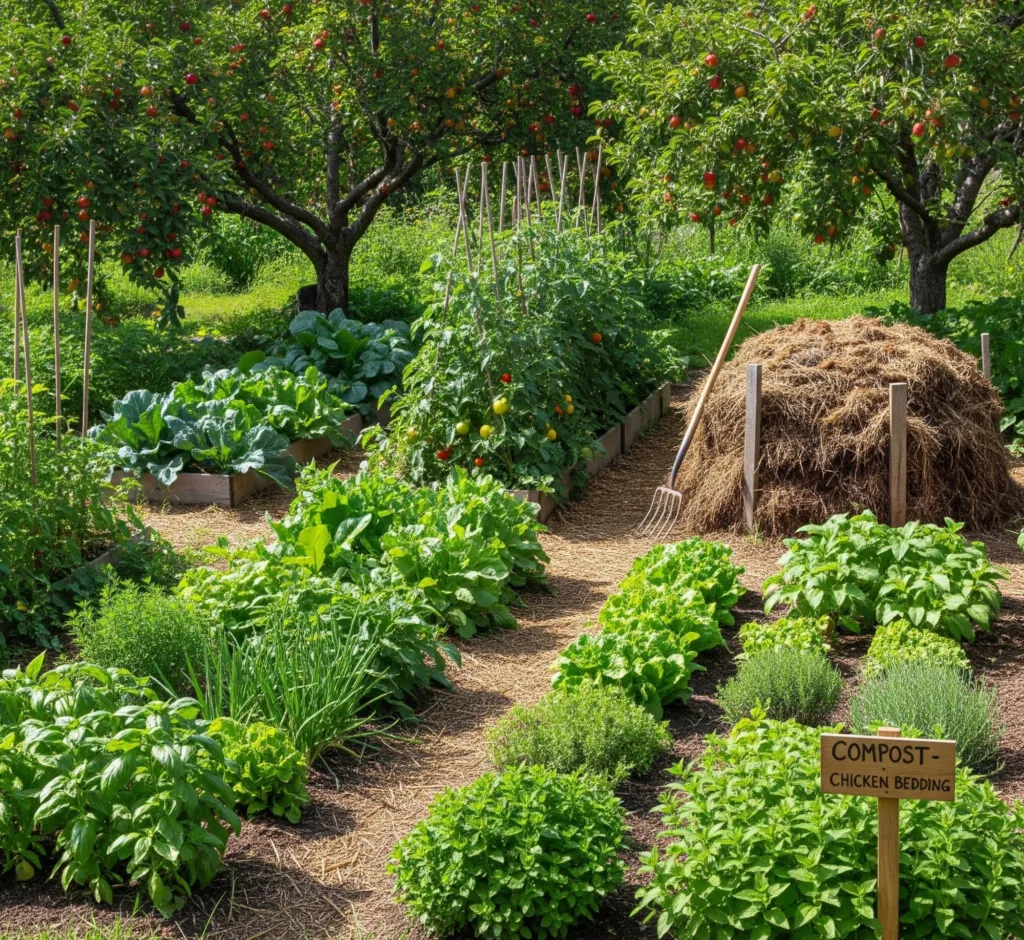
Using chicken bedding as garden fertilizer is a perfect example of sustainable homesteading. Your chickens feed your garden, and in return, your garden feeds you. It’s a natural cycle that makes backyard farming more rewarding and environmentally friendly.
